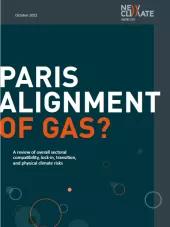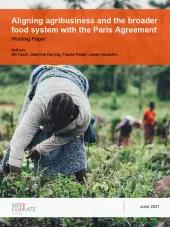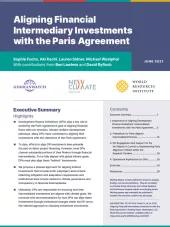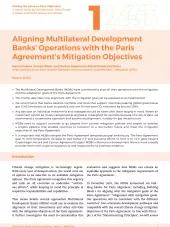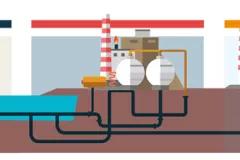The Paris Agreement aims to hold the increase in the global average temperature to well below 2°C above pre-industrial levels and to pursue efforts to limit the temperature increase to 1.5°C. To contribute to the fight against climate change, the MDBs have operated under what this report refers to as a Climate Finance Paradigm. Yet, given the urgency of the challenge and the rate at which the world must reduce emissions, this current paradigm is not enough and a new paradigm is needed. This report describes this new paradigm, called the Paris Alignment Paradigm, and provides recommendations on how the MDBs can transition from the Climate Finance Paradigm to the Paris Alignment Paradigm.
Highlights:
- Multilateral development banks (MDBs) have a critical role to play in helping countries meet the goals laid out in the Paris Agreement. To contribute to the fight against climate change, the MDBs have to date largely operated under a Climate Finance paradigm that involves defining, tracking, and maximizing the amount of finance that MDBs provide and mobilize for climate change mitigation and adaptation.
- However, the current paradigm is not enough to meet the challenge. MDBs need to transition to a Paris Alignment Paradigm, which involves not only maximizing volumes of climate finance, but also gradually bringing the rest of the MDBs’ pipelines and portfolios into alignment with the requirements of the Paris Agreement, mainstreaming adaptation across all MDB operations, and helping client countries implement and develop stronger Nationally Determined Contributions (NDCs).
- Climate scenarios strongly suggest that global CO2 emissions need to reach net zero around 2050, meaning that energy supply and energy use (including transportation, buildings, and industry) needs to be decarbonized by that point. As a matter of policy, MDBs and their shareholders should embrace the need to reach a zero-emissions energy sector and overall net-zero CO2 emissions by mid-century. They should work with clients to identify decarbonization pathways and renewable alternatives to emissionintensive activities.


